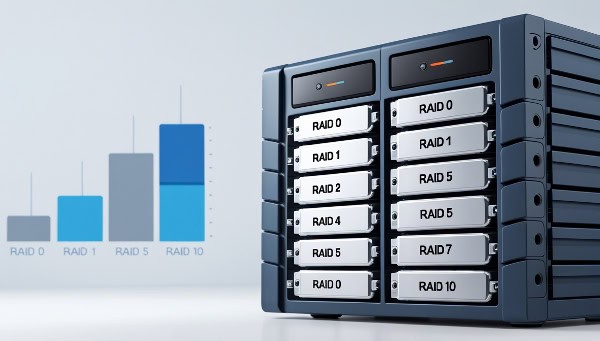IP Subnet Calculator
IPv4 Calculation Results
| IP Address: |
|
| Network Address: |
|
| Usable Host IP Range: |
|
| Broadcast Address: |
|
| Total Number of Hosts: |
|
| Number of Usable Hosts: |
|
| Subnet Mask: |
|
| Wildcard Mask: |
|
| Binary Subnet Mask: |
|
| IP Class: |
|
| CIDR Notation: |
|
| IP Type: |
|
Additional Information
| Short: |
|
| Binary ID: |
|
| Integer ID: |
|
| Hex ID: |
|
| in-addr.arpa: |
|
| IPv4 Mapped Address: |
|
| 6to4 Prefix: |
|
IPv6 Calculation Results
| IP Address: |
|
| Full IP Address: |
|
| Network Address: |
|
| IP Range: |
|
| Total IP Addresses: |
|
| IP Type: |
|
About IP Subnet Calculator
Our IP Subnet Calculator is a powerful tool designed for network administrators, IT professionals, and students. It supports both IPv4 and IPv6 addresses, providing comprehensive subnet information with just a few clicks.
Features
- Support for IPv4 and IPv6 addresses
- Detailed subnet calculations
- CIDR notation support
- Easy-to-use interface
- Instant results
How to Use
- Choose between IPv4 or IPv6 calculator
- Enter your IP address
- Select the subnet mask or prefix length
- Click "Calculate" to see detailed results
Understanding Subnet Calculation Results
Our calculator provides comprehensive information including network address, broadcast address, usable IP range, and more. This information is crucial for network planning, troubleshooting, and management.
Understanding Subnets
A subnet, or subnetwork, represents a distinct segment within an IP network, created to optimize traffic flow and resource allocation.. The Internet Protocol (IP) is the principal communications protocol used for relaying data across networks. It is most commonly associated with the TCP/IP suite, which stands for Transmission Control Protocol/Internet Protocol.
Subnetting is the technique of splitting a larger network into smaller, independent segments for improved organization and efficiency. Routers facilitate communication between these subnetworks, acting as a physical boundary. While IPv4 remains the most widely used addressing system, IPv6 adoption has been steadily increasing since 2006.
An IP address consists of two main parts: the network prefix (routing prefix) and the host identifier. The host identifier uniquely identifies a specific device or interface within the network. The network prefix is often represented using Classless Inter-Domain Routing (CIDR) notation, which is applicable to both IPv4 and IPv6. CIDR provides a flexible way to allocate IP addresses and define network boundaries.
In IPv4, subnet masks are used to distinguish between the network prefix and the host identifier. These masks are often written in dot-decimal notation. In IPv6, the network prefix serves a similar purpose, with the prefix length indicating the number of bits allocated to the network portion of the address.
Before CIDR, IPv4 addresses were categorized into classes (A, B, and C) based on their range. However, CIDR introduced a more efficient method for IP address allocation, requiring both an address and its corresponding network mask.
IPv4 Subnet Reference Table
| Prefix Size |
Network Mask |
Usable Hosts per Subnet |
| /1 |
128.0.0.0 |
2,147,483,646 |
| /2 |
192.0.0.0 |
1,073,741,822 |
| /3 |
224.0.0.0 |
536,870,910 |
| /4 |
240.0.0.0 |
268,435,454 |
| /5 |
248.0.0.0 |
134,217,726 |
| /6 |
252.0.0.0 |
67,108,862 |
| /7 |
254.0.0.0 |
33,554,430 |
| Class A |
| /8 |
255.0.0.0 |
16,777,214 |
| /9 |
255.128.0.0 |
8,388,606 |
| /10 |
255.192.0.0 |
4,194,302 |
| /11 |
255.224.0.0 |
2,097,150 |
| /12 |
255.240.0.0 |
1,048,574 |
| /13 |
255.248.0.0 |
524,286 |
| /14 |
255.252.0.0 |
262,142 |
| /15 |
255.254.0.0 |
131,070 |
| Class B |
| /16 |
255.255.0.0 |
65,534 |
| /17 |
255.255.128.0 |
32,766 |
| /18 |
255.255.192.0 |
16,382 |
| /19 |
255.255.224.0 |
8,190 |
| /20 |
255.255.240.0 |
4,094 |
| /21 |
255.255.248.0 |
2,046 |
| /22 |
255.255.252.0 |
1,022 |
| /23 |
255.255.254.0 |
510 |
| Class C |
| /24 |
255.255.255.0 |
254 |
| /25 |
255.255.255.128 |
126 |
| /26 |
255.255.255.192 |
62 |
| /27 |
255.255.255.224 |
30 |
| /28 |
255.255.255.240 |
14 |
| /29 |
255.255.255.248 |
6 |
| /30 |
255.255.255.252 |
2 |
| /31 |
255.255.255.254 |
0 |
| /32 |
255.255.255.255 |
0 |
Related Useful Tools

Base64 Encoder & Decoder
Easily encode text and files to Base64 format or decode Base64 strings back to readable data.
Go to Tool

Database Growth Calculator
Forecast your database growth with precision. Estimate storage needs and plan ahead to prevent unexpected capacity issues!
Go to Tool

RAID Calculator
Easily calculate RAID storage, redundancy, and performance with our RAID Calculator. Supports RAID 0, 1, 5, 6, 10 & more!
Go to Tool

Database Backup Size Calculator
Calculate your database backup size instantly. Plan storage needs efficiently and optimize backup strategies with ease!
Go to Tool

Unix Timestamp Conversion
Convert Unix epoch timestamps to human-readable date and time formats and vice versa.
Go to Tool

IP Subnet Calculator
IP Subnet Calculator - Efficiently Calculate Subnets, IP Ranges, and Network Addresses for IPv4 and IPv6.
Go to Tool

Bandwidth Calculator
Accurate Bandwidth Calculator for Websites and Hosting – Calculate Data Transfer Speed, Upload/Download Times, and More.
Go to Tool